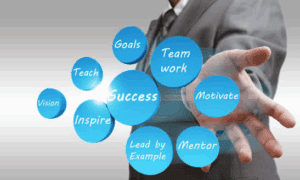Employee development has taken a sharp turn in recent years, and learning management systems (LMS) are right at the center of it. Companies are leaning hard into these platforms to train, upskill, and empower their teams, and the numbers back it up. A 2025 report predicts the corporate LMS market will surpass $50 billion by 2030, growing at a steady 23.8% annually. That’s not just a trend—it’s a signal that businesses see the value in structured, tech-driven learning.
But here’s the catch: an LMS is only as good as how well it fits into the bigger picture. A fresh take on LMS integration is shaking things up, promising to streamline employee development and make it more impactful than ever. This isn’t about slapping new software on old problems. It’s about weaving systems together to save time, boost growth, and keep people engaged. Let’s break down why this matters and where it’s taking us.
Tying the Knots Together
Workplaces can feel like a tangle of tools sometimes. You’ve got your LMS for training, then separate apps for onboarding, performance reviews, and team chats. It’s a lot to juggle, and employees end up spending more time figuring out where to click than actually learning. Integration cuts through that mess like a sharp knife. When an LMS links up with the stuff people already use—think Slack, Workday, or even email—it turns a jumble of tasks into one smooth flow.
Suddenly, a new hire can jump from an onboarding module to a team intro video without switching screens. Managers can see progress without digging through reports. It’s less about the tech itself and more about getting everyone on the same page, fast.
Tailoring Growth to Fit
Every employee brings something different to the table—some pick up skills in a flash, others need a slower burn. An integrated LMS can adapt to that; by hooking into tools that track performance or suggest next steps, it hands managers a way to personalize development without breaking a sweat. Picture a sales rep who’s acing product knowledge but stumbling on negotiation tactics. The system could nudge them toward a role-play video or a quick course, all based on what it’s already picked up.
It’s not about micromanaging—it’s about meeting people where they are. For a remote worker or a frontline staffer, that might mean pulling in bite-sized lessons from a mobile app or syncing with a mentorship platform. The result? Growth that feels less like a chore and more like a natural step forward.
Lightening the Load for HR
HR teams are the unsung heroes of employee development, but they’re often buried under busy work. Without integration, they’re stuck manually uploading rosters, chasing completion stats, or piecing together compliance records. It’s draining. A well-connected LMS flips that script entirely.
When it syncs with HR software or payroll systems, data moves on its own. Training records update instantly, certificates land in the right hands, and deadlines don’t slip through the cracks. It frees up HR to focus on the big stuff—like designing programs that actually inspire people or spotting talent ready for the next leap. It’s not about shortcuts; it’s about working smarter.
Setting Up for Tomorrow
Businesses don’t stand still, and neither should their learning tools. Integration isn’t just a fix for today—it’s a way to keep pace with whatever’s around the corner. New tech, like AI coaching or virtual reality simulations, keeps popping up, and an LMS that plays well with others can fold those in without a total redo. It’s like building a car with room for upgrades—you don’t need them now, but you’ll be glad they fit later.
This matters even more as work keeps shifting. Hybrid teams, remote setups, and global crews are the norm now. An LMS that ties into video calls, collaboration hubs, or mobile access keeps development alive no matter where people clock in. It’s about staying flexible and keeping the learning vibe strong.
Keeping People at the Core
All this tech talk doesn’t mean the human side gets lost. Integration’s real magic is in how it clears the deck for what matters—managers mentoring, teams bonding, and employees stretching their wings. A seamless LMS doesn’t replace a good check-in or a pat on the back; it makes space for them. The goal isn’t to automate everything but to amplify the connections that drive growth.
At its heart, rethinking LMS integration is about building something that works for people, not just systems. As these platforms get tighter and more in tune with the workplace, they’re paving the way for employee development that’s sharper, smoother, and genuinely meaningful. That’s not just a streamline—it’s a leap into a future where learning lifts everyone up.



































